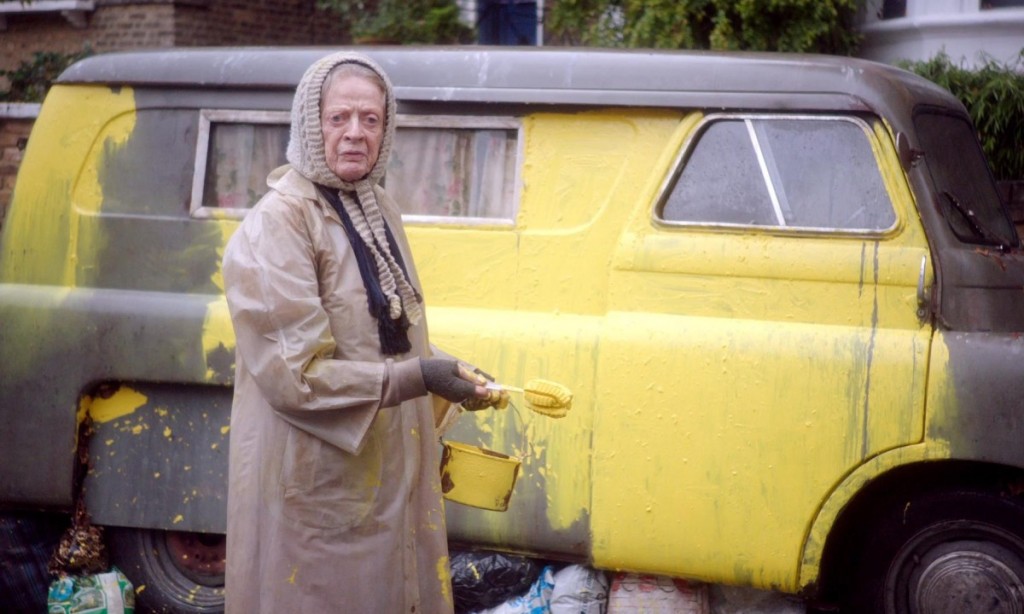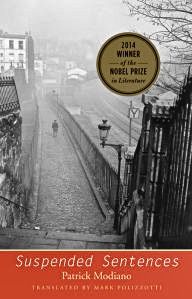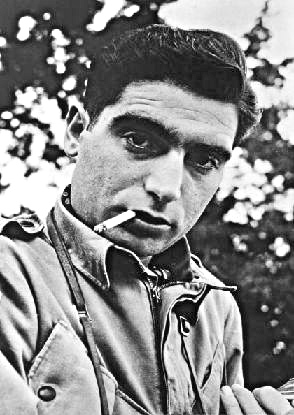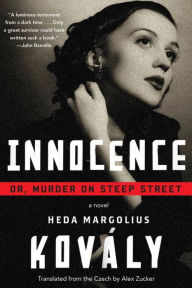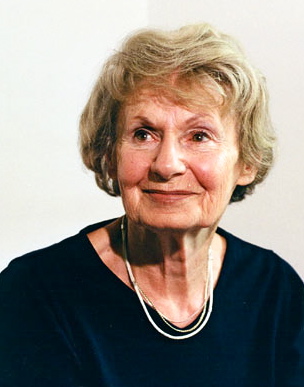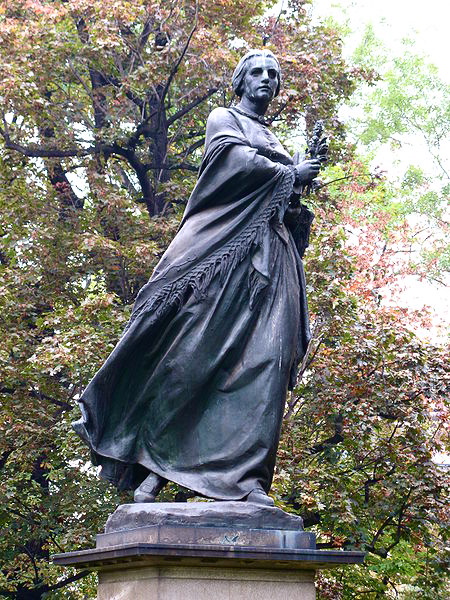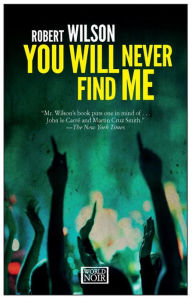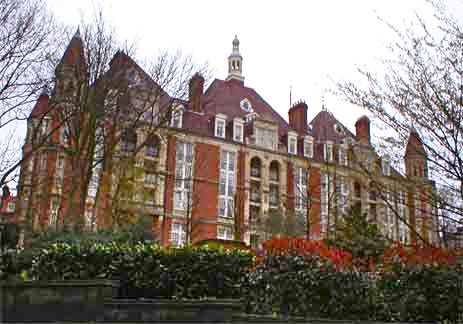“My head leaning against the [train’s] carriage window, I watch the houses roll past me like a tracking shot on film. I see them as others do not; even their owners probably don’t see them from this perspective. Twice a day, I am offered a view into other lives, just for a moment. There’s something comforting about the sight of strangers safe at home.”–Rachel’s view during her daily commute by train.
 Book titles are often the first real clue to the author’s vision for his/her story and characters, and it is ironic that my review of this book, The Girl on the Train, immediately follows my review of another book with a similar-sounding title, Alan Bennett’s The Lady in the Van. In the latter, however, Bennett’s use of “lady” to describe Mary Shepherd, an elderly homeless woman living in a van without plumbing, establishes not only her pride and sense of independence but also the author’s ironic respect for her and her queenly refusal to yield to anyone about anything. Author Paula Hawkins’s title of The Girl on the Train, on the other hand, conveys a completely different impression about the person at the heart of this story. Referring to Rachel, a main character, as a “girl,” though she is in her early thirties, may be appropriate if one considers her limitations, but it also betrays the author’s own lack of respect for her. In fact, Rachel is an alcoholic whose husband has left her, a woman who has had repeated warnings at work about her drunken behavior, a person totally dependent on others for a sense of self, and someone so insecure that she needs constant positive reinforcement in order to get along in the real world. “I have lost control of everything, even the places in my head,” she notes.
Book titles are often the first real clue to the author’s vision for his/her story and characters, and it is ironic that my review of this book, The Girl on the Train, immediately follows my review of another book with a similar-sounding title, Alan Bennett’s The Lady in the Van. In the latter, however, Bennett’s use of “lady” to describe Mary Shepherd, an elderly homeless woman living in a van without plumbing, establishes not only her pride and sense of independence but also the author’s ironic respect for her and her queenly refusal to yield to anyone about anything. Author Paula Hawkins’s title of The Girl on the Train, on the other hand, conveys a completely different impression about the person at the heart of this story. Referring to Rachel, a main character, as a “girl,” though she is in her early thirties, may be appropriate if one considers her limitations, but it also betrays the author’s own lack of respect for her. In fact, Rachel is an alcoholic whose husband has left her, a woman who has had repeated warnings at work about her drunken behavior, a person totally dependent on others for a sense of self, and someone so insecure that she needs constant positive reinforcement in order to get along in the real world. “I have lost control of everything, even the places in my head,” she notes.
The Girl on the Train, a debut thriller from England, features three women, one of whom becomes the victim of murder in this plot which has no heroes or heroines, no Superman or Batgirl or brilliant detective to come flying to the rescue. To involve the reader, the author has had to choose a different way to counteract the absence of a hero/heroine, and she does so here in a most ironic way – by creating three important female characters, all of whom are weak, dependent, and dealing with personal problems involving husbands and lovers, past and present. The reader’s involvement, stimulated throughout by a sense of pity for these damaged women, depends upon an empathy with their psychological problems and the flawed decisions they make while affected by their problems. Rachel, the main character who introduces the novel, connects them all, structurally, through her train rides from the rural community where she has a room to her job in London. As she commutes, the train passes a house in the town of Witby, where she lived for five years with her husband Tom, and where he continues to live with his current wife Anna and their child. Four houses down the road from Tom and Anna, live a couple whom Rachel has named Jess and Jason, people she has never met but whose lives, as seen from the train, seem idyllic in the fantasy world which Rachel would like to believe parallels her own life with ex-husband Tom.

Rachel is particularly fond of pre-mixed gin and tonics in cans, which she purchases from the supermarket – four of them for the ride home.
From this beginning, the author then flashes back a year, introducing Megan Hipwell, married to Scott, the “Jess” and “Jason” of Rachel’s imagination. Giving exact dates, fourteen months apart at the time that Megan first appears in the novel, and updating throughout to include Anna, Tom’s present wife, the author toggles the picture of life in Rachel’s mind in 2013 back and forth with the points of view of these two other women in 2012, gradually reducing the interval between episodes until, at the end of the novel, the two time frames come together. Megan, whom Rachel sees kissing a stranger one day as the train goes past her house, is a former gallery owner, now out of work, “playing at real life instead of actually living it,” and her life consists of shopping, Pilates classes, and seeing her therapist, Dr. Kamal Abdic. Anna, Tom’s new wife and the mother of their baby, is not only living in Rachel’s former house, but also among all Rachel’s furnishings, and she is furious that Tom is not being firm enough with Rachel when she calls them at night in her drunken need for someone to talk to, conversations Rachell often does not remember the next day.

This rural train station may resemble the small station in the town from which Rachel departs for London each morning.
Rachel’s violation of the personal boundaries that normal people observe bring her into the worlds of both Megan and Anna one day when she decides to get off the train in Witby. She begins to make physical contact with Scott, Megan’s husband, with Anna and the baby, and with other peripheral characters.
The reader cannot help but notice how much these three women behave like children, responding to uncomfortable situations with temper tantrums, ignoring the “rules” of civilized discourse and behavior, and throwing hissy fits whenever things do not go their way. The men, who often regard themselves as victims of these women, also contribute to their problems by taking advantage of them. When the body of one of the women, missing for a week, is discovered, and the police begin their investigation of what is found to be murder, the drama speeds up, the mysteries deepen, and the reader’s speculation about the identity of the murderer increases. With three neurotic women – Rachel, Megan, and Anna; two frustrated men – Scott and Tom; a psychiatrist who gets around and seems to know everyone; and a mysterious man with red hair whom Rachel knows from the train, the number of suspects and their possible motivations is high.

Some frightening events take place in and around an old railroad tunnel during the course of this novel.
Many reviews of this novel talk about the “Hitchcockian” qualities of this novel. I agree that there is a similarity between The Girl on the Train and Rear Window, in that both the novel and the film feature a main character who sees something unusual out a window, thereby starting the action. That is the only real similarity, however. In The Girl on the Train, the reader can imagine any one of the main characters murdering someone if pushed to the limit, so there is little surprise when the real culprit is discovered, and none of the characters are likable, so there is little sense of disappointment with the discovery. The women are so much alike that they could all be the same person in different guises, thereby reducing the eventual surprise even more. The author does have a structural formula for creating suspense, and she does follow it precisely and somewhat successfully as she slowly reveals information from the two different time periods of the novel, but the structure itself, with its back and forth in time, and its shifts among the immature “girls” who are the main characters here make this novel more akin to a domestic TV serial than to a carefully choreographed Alfred Hitchcock film with its withheld information and its well-developed, sophisticated characters.
Photos, in order: The author’s photo by Matt Dunham/AP appears on : http://www.csmonitor.com/
Though I have never seen pre-mixed gin-and-tonics in cans at stores here in the US, they are a feature in Rachel’s ride home from work on Friday night. She buys four of them to take with her. http://thesipadvisor.com
Rachel trips on the stairs at her rural train station and injures herself:http://www.dailymail.co.uk/
An abandoned railroad station features in the action and inspires fear in Rachel. https://www.pinterest.com/



